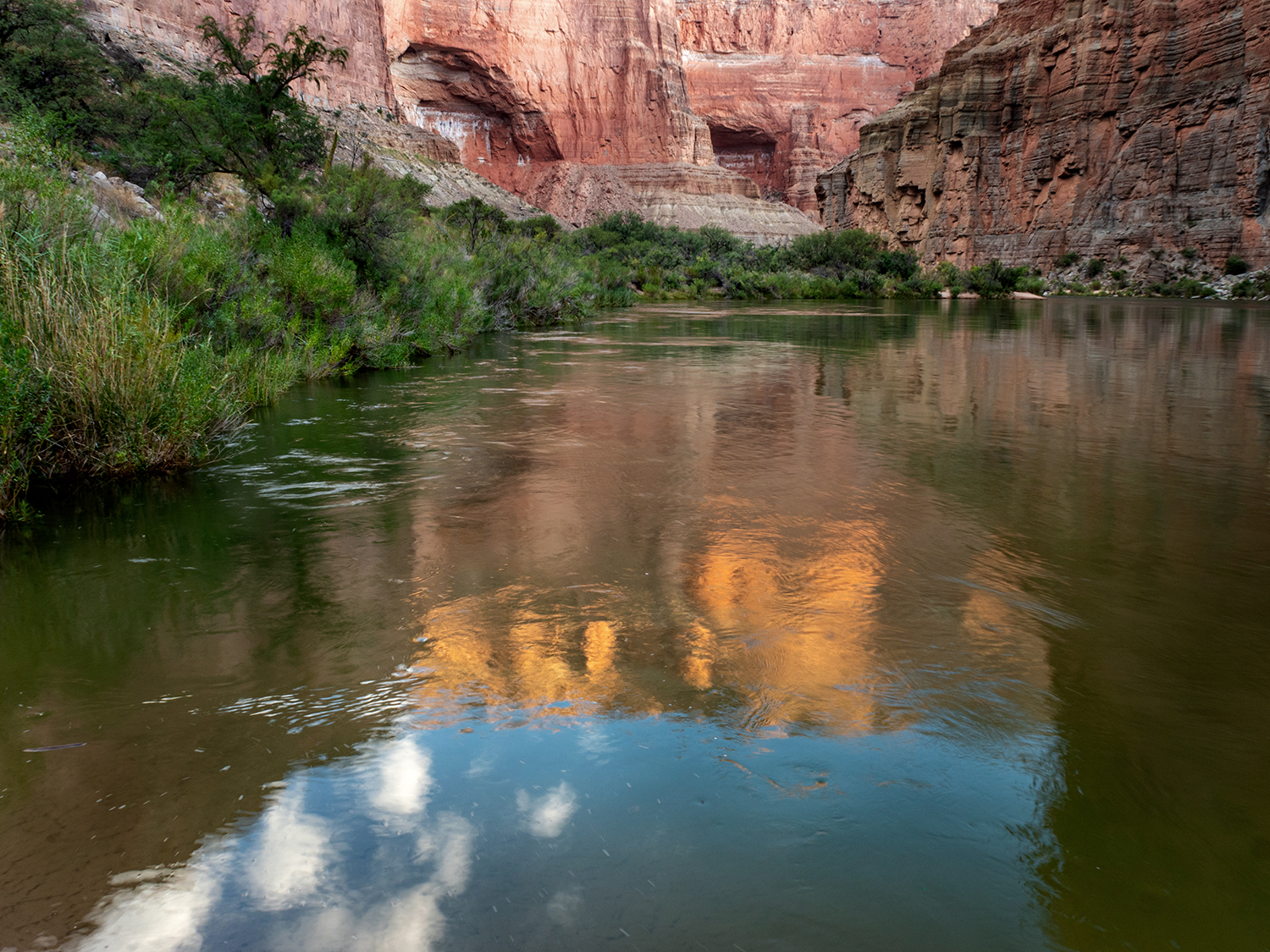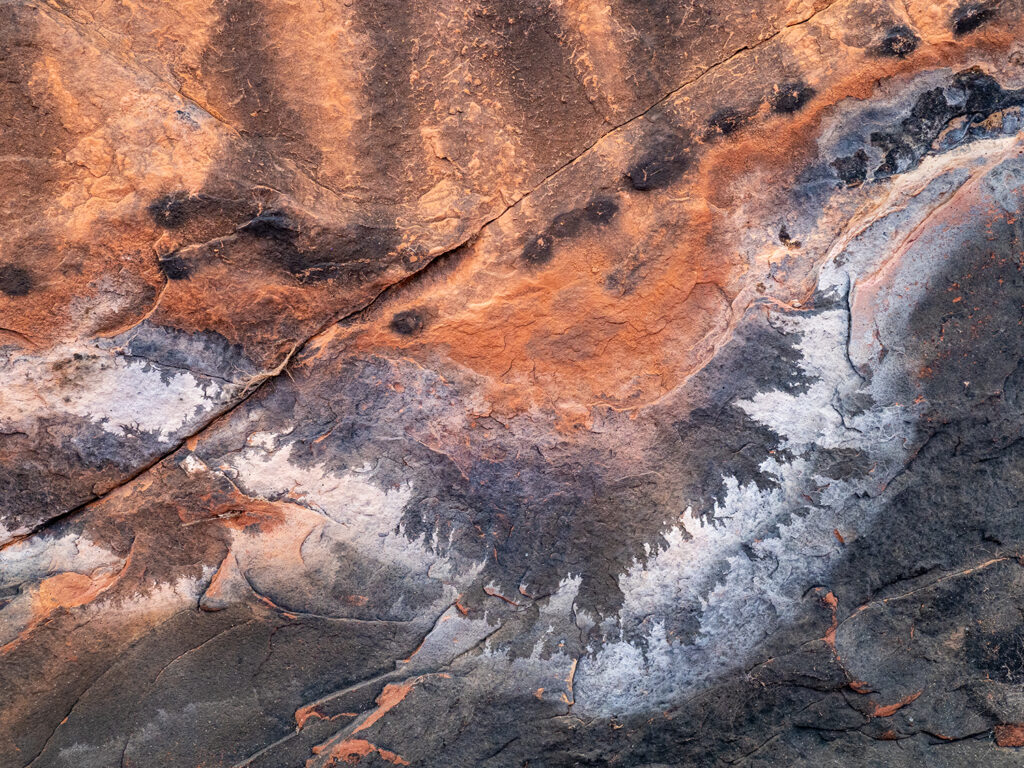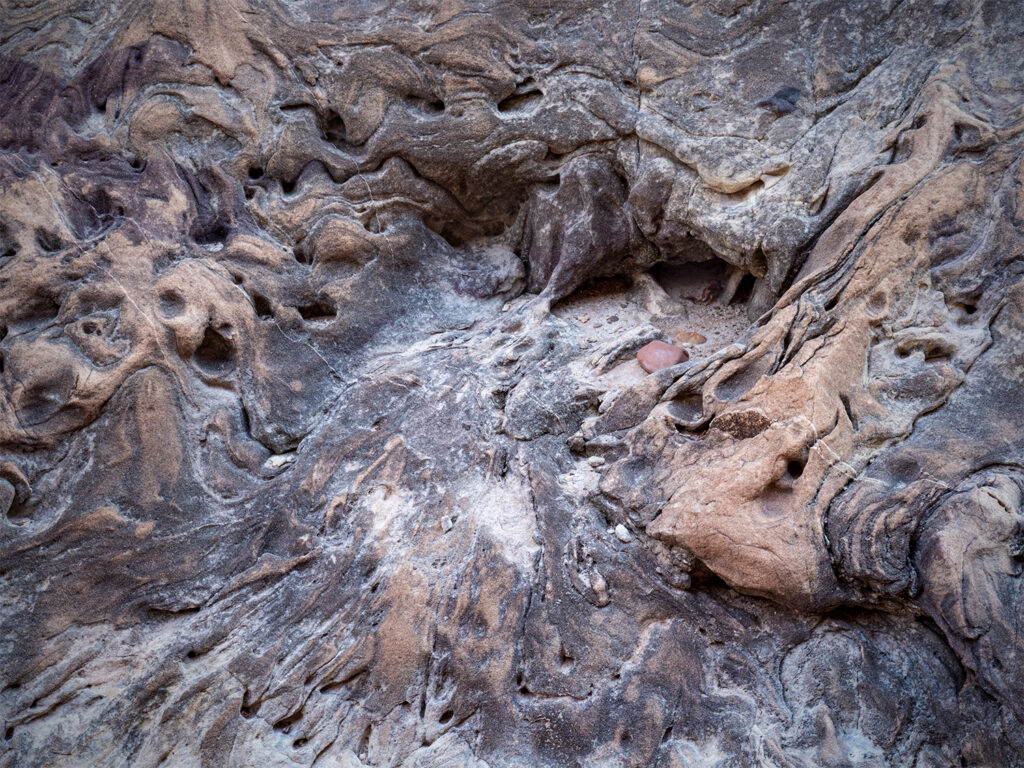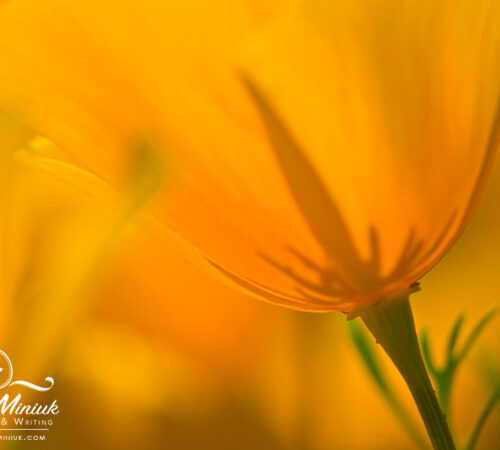The Grand Approach

Dear Bubbles:
I’d love to hear your musings about your approaches to shooting on a [Grand] Canyon [rafting] trip now that you’ve done it a lot. I’m totally over the need to bag any standards like the Nankoweap granaries, Deer Creek Falls, etc., and like being more contemplative and spontaneous these days anyway. Not even sure quite what I’m asking. I probably just want an excuse to think about the Grand Canyon. But I’d love your random thoughts!
~Jackson
Dear Jackson,
I’m still riding “Reentry Rapid” from my last trip Grand Canyon rafting trip this past August, my 8th lap in 8 years—which means I haven’t fully reintegrated with the pace and expectations of the manufactured world (i.e., the world we live in). My river brain is still soaking in the heavenly bliss of the real world (i.e., the canyon and river). So I thank you so very much, Jackson, for giving me an excuse to stay in the splendor of the Grand Canyon and Colorado River.
Before I start musing away, first, some context for those who haven’t been on a Grand Canyon rafting trip yet:
I started arranging private single-boat charters with Hatch River Expeditions in May 2017 following my first river trip with a group of friends in June 2016. Because it was as every bit as epic as people had told me it would be, I’ve made it an annual event since 2017, except for 2021 (the year I did my guide training trip with Hatch.)
A private single-boat charter through the Grand Canyon is different than the typical rafting trip. A private charter means I hire Hatch for a specific time frame, and I am responsible for finding passengers to join me. Most motorized commercial river trips run with two boats. I run my photography retreat with just one. This means a much smaller, more manageable group size. The single boat can hold 16 people (15 passengers plus me) plus two Hatch guides. This is half of the people on two-boat arrangement. The boat is about 34 feet long so there’s room for all of us. Although it’s officially called an S-rig, we sometimes refer to it as the “Party Barge.”
While I would love the slower pace and the added time a rowing trip affords (i.e., one where there is a posse of smaller rafts rowed by guides and in some cases, paddled by passengers), I choose to run a motor trip. It’s a shorter trip so it fits into more people’s vacation windows. (That said, my eight-day charter is one day longer than the typical seven-day motor trip.) We get to places faster so we can spend more time exploring side canyons. When we’re on the raft, we’re able to observe and photograph the beauty all around us without having to worry about expending energy paddling or rowing for miles.
We run the same river as everyone else, but my charter itinerary focuses on photography. We spend more time at locations to allow for setting up a tripod, contemplating ideas, and creating photographs without feeling rushed. That said, even when we spend a couple hours in a spot, it’s NEVER, EVER enough time. Which is why I keep going back…

In my advertising for this trip, I explicitly state: “IMPORTANT NOTE: If you have expectations that we’ll be ‘nailing’ iconic locations like Nankoweap, Little Colorado River, Elves Chasm, Deer Creek Falls, etc. in ‘perfect’ lighting conditions, this is not the trip for you. While I work closely with our boatmen to arrange visits at classic and lesser-known photogenic locations in the best light possible, our eight-day itinerary will simply not enable us to see it all at its best. (We’d need years and years for that…). Due to the multitude of variables outside our control, we cannot guarantee stops at any specific location during this trip. Besides, I philosophically believe making creative, storytelling, and meaningful images comes from within and incorporates, but does not depend, on external factors like location, weather, seasons, etc. A great photographer can make the most in every lighting situation and in any location, not just the iconic ones…and that’s exactly what we’ll be learning how to do–and doing–on this trip!”

Those multitude of variables that affect our itinerary include things like what the light’s doing at the time, the current weather (being in a side canyon in rain is a deadly idea…), accessibility issues, the mobility of our group, how many people are already in a spot, is a camp already occupied, how many miles we need to cover in a day and for the rest of the trip (to get to specific desired camps, to see other locations, etc.). One of my favorite parts of this trip is sorting through the various “if-then” situations with the Hatch guides who know this place so well. Conversations like “If we stop here, then we’ll miss this two days later.” Or “If we don’t stop there, we can do this, this, and this.” Some of my favorite spots—like Sheer Wall Camp, 75-Mile Canyon, the unnamed plateau by Tanner Camp, and the Ross Wheeler boat—are ones at which most of the river trips don’t even bother to stop. Part of the magic of each trip is embracing the uncertainty and watching the experience unfold as we go while we’re on the river.
Because the river and canyon and Mother Nature are really the ones in charge…

A great example of this is what happened in August 2022. During our pre-trip planning conversations, my trip leader Josh and I decided we’d try to camp at Upper North Canyon on our first night. Three days prior to launch, a massive monsoon storm rolled through the area, dumping buckets and buckets of rain. Josh texted me, “Just heard North Canyon flashed. Camp is gone.” And it was. What was normally a gigantic sand dune had turned into a boulder field. We found a different camp downstream, one I hadn’t stayed in before, and it was absolutely delightful. On a Grand Canyon river trip, if you have your heart set on something, you’re only setting yourself up for disappointment. It’s cliché to say, but ya gotta just go with the flow.
No two days on the river are the same. Generally, the day starts off with us shooting sunrise light from camp, loading the boat, motoring a bit, doing an activity (like a side hike, visit to a historic location, etc.), motoring some more, maybe doing another activity, finding a camp, unloading the boat, shooting sunset light, and sleeping. Lather, rinse, repeat until we go 188 miles from Lee’s Ferry to Whitmore Wash. From Whitmore Wash, our group gets helicoptered out to Bar 10 Ranch five or six people at a time. Then passengers have the option of flying back to Marble Canyon where we start or to Las Vegas to catch their flights.
There are no camera store and electricity isn’t readily available at the bottom of the canyon. So knowing what to pack is critical. Plus, our weight limit for all our gear—clothing, personal items, and camera gear—is 25 pounds. Our tripods are thankfully excluded from this limitation. Hatch doesn’t care how much stuff you bring—although the guides would love to be able to see over the duffel pile. The weight restriction is due to the helicopter trying to avoid burning expensive fuel.
This means really hard decisions and trade-offs, ones you would not necessarily have to make when planning to visit any old regular location. Do you really need a third pair of underwear (which you’ll only wear in camp)? Or should you bring another battery? My answer: the battery gets packed.
My “canyon kit” gets paired down from what I normally stash in my camera backpack. I bring:
- A single camera
- Two lenses: a 7-14mm and a 14-150mm which gives me the 35-mm equivalent range of 14mm-300mm).
- One four-stop soft graduated neutral density filter (which I never use, but can’t bear to be without)
- A polarizer (which stays on my 14-150mm lens in lieu of a UV filter unless my shutter speed is too low while moving on the boat)
- A variable ND filter from 2-8 stops
- Multiple lens cloths
- A simple rain cover by Optech
- And 7 batteries (like a vitamin, one a day)
My camera bag stays home. It’s too big. It weighs too much. Hatch provides each person with two dry bags—a day bag and an overnight bag (affectionately referred to as pumpkins). I keep most of my photo gear wrapped in a large telephoto lens cover. I typically protect my camera with my one pair of socks and my rain gear.
(All this said, plenty of people use “only” their phones and are highly successful in making images that mean something to them.)
We can—and do—shoot from the raft as it’s motoring downstream. When we come to rapids, though, we secure our cameras in our day bags temporarily. Some people like to shoot through the rapids with waterproof-ed camera and/or GoPros. On most of the rapids, though, our guides recommend holding on with two hands for safety so head or chest harnesses are a must.

As we make miles downstream, we employ a “grab-n-go” approach (which is a cousin to “spray and pray”). It’s challenging to sit on the boat in deep contemplation, asking yourself “To what am I responding and why?” I mean, you can. But by the time you see a moment, analyze it, and attempt to photograph it, it’s too late. The boat has already passed it by, and it’s not turning around. From the boat, you shoot first (in continuous shoot mode), and ask questions later.
Things change when we’re off the boat. When we stop for lunch, explore a canyon or waterfall, or hang out in camp, we have more time to contemplate our lives away! You can even shoot right from your cot with coffee or a margarita in your hand if you wish.
It may sound like this is a different trip than my other trips. And it is in many ways! But that said, it mirrors almost exactly how I make photographs in my own personal time. I go for a hike, paddle, drive—in all lighting and weather conditions—and respond to the opportunities presented to me. My camera just comes along with me for the ride. Sometimes I wander and wonder (usually with a coffee mug in hand). Sometimes I sit in one place stare at waves for hours. Sometimes I forget that I’m sitting in a puddle after making photographs for two hours. I typically don’t drive to get to a scheduled photo shoot at sunrise or sunset at a set location like we do on other photography workshops. I don’t have a set itinerary. I don’t have any expectation of making a photograph whatsoever.
Whether I’m on a river trip or on the Oregon coast or in an Acadian forest, adopting an autotelic personality—one where enjoying the experience for the experience itself is emphasized over producing results—leads to fulfillment for me. In the unique Grand Canyon environment, though, I think it’s easier to get into that blissful flow state faster. You’re disconnected from the outside manufactured world for an extended period. You leave behind societal pressures, expectations, and access to emails, voicemails, YouTube, and status meetings. In the absence of these things, you are free to be whoever you are just as you are. After all, the cliffs, herons, and rapids do not care who you are, where you’re from, what you do, what you’re wearing, etc.
Researchers believe it takes just three days in nature to cleanse one’s soul of emails, phone calls, social media posts, traffic woes, and the other unfulfilling crap most of us fill our precious daily lives with. David Strayer, a cognitive psychologist from the University of Utah, called this the “three-day effect.” During one of his research trips in the wild, Strayer explained, “On the third day, my senses recalibrate—I smell things and hear things I didn’t before.”
No where do I see this happening more profoundly, or consistently, than on our river trip. On people’s first visit, no one sleeps the first night. (One of our 2023 participants called it “the best night of insomnia she’s ever had.”) Some people get some sleep the second night. The three-day effect kicks in usually on day three or four depending on how much rest people finally get and their past history with river trips. We see their shoulders drop, their jaws soften, and their spirits soar. We watch people turn into kids again. (And truly, it’s one of the very best things in life to witness.) Splashing in waterfalls. Singing on beaches while photographing waves. And squealing through rapids. There are so few places left where you can experience this raw freedom in this way. You’re not just observing the canyon from a rim overlook. You’re in it. You’re a part of the grandeur. After you taste the “real world” (as I refer to it as) for seven to eight days, reentry into the manufactured world is a real bear. Hence the name “Reentry Rapid.”
With each trip I make through the canyon, I become less and less focused on making images. Ironically, by not focusing on making pictures, I’m making better and deeper pictures year over year. My photos from lap 8 are significantly more interesting than those from lap 1. That goes for any place I’ve revisited time and time again.
There are at least three reasons for this:
One, after the first year, more mental energy goes towards worrying about your own survival. Until you’ve experienced a Grand Canyon river trip, questions swirl in your mind like “How big are these rapids really?” (Well, some of them are pretty darn big and boney…), “Where am I going to sleep?” (On an incredible beach with an incredible view), and “Will I get enough food to eat?” (OMG yes and then some. Then they bring out the dessert…). On the second trip onward, you get settled in faster because you know what to expect. You know your basic needs will be more than addressed. All that mental energy can then go towards taking in the experience and enjoying more creative pursuits. Although this transition is more intense in isolated places like the Grand Canyon, this happens elsewhere too as you gain your bearings.
Two, you get to know the place and build deeper connections with every trip. I know the names of the geological layers and where they’ll appear en route in the canyon now. I have the order and names of the rapids down pat for about the first half of the trip. (I’m working on the second half…) In understanding your environment, you make less “I was here” snapshots. You make more “I am here” photographs and look for ways to fill out your ongoing relationship with a place. Sure, my groups make stops at classic locations like Nankoweap and Deer Creek Falls now and then. I encourage all my participants to make their photographs. They are there. It is there. And it is iconic for a reason. But I try to remind them to also connect with your surroundings in their own ways through your their curiosities. What’s meaningful to you in this moment? Focusing on your existence in the present moment is where you can tell your own visual stories of this grand place—or any place you travel.
Three, my confidence and trust in my intuition and skills continues to grow off-river which makes photographing fleeting situations in places like the Grand Canyon easier. After reaching my basic technical competence in 2013, I no longer fumble with things like depth of field, lighting, and exposure. Through years of practice, they’ve become second nature to me. This allows me to respond quickly in the moment. As I like to joke in my workshops, “When the jaguar runs across the street under a double rainbow, you don’t want to be asking yourself ‘To what am I responding?’ and ‘What ISO should I use?”
Same thing for the Grand Canyon. We definitely spend time learning new skills and practicing old ones down there. We also learn how to interpret this immensely grand landscape. It’s a phenomenal place to learn how to react in the moment and create the illusion of depth (which is ironically quite difficult to do in this place with so much depth—paying attention lines, layers, and light makes all the difference). But it’s not the best place to learn how to turn your camera on (especially if you’re carrying the expectation of bringing “wall-hangers” home from your trip). Practicing and visualizing ahead of time can make a world of difference. Because while jaguars do not live in the canyon and there are no streets, we do occasionally get rainbows!
For more tips on practicing your skills without touching a camera and without traveling to some scenic locale, read my earlier post on “Picture Your Picture”: www.dearbubbles.com/2021/02/picture-your-picture/ I start preparing for my next trip literally within seconds of the last on ending. I visualize off and on for an entire year. But once I get there, I stop thinking. I stop focusing on photography and start focusing on the experience. I trust and let my brain do the work I’ve trained it to do.
The best way to describe my approach to all of my photography—whether in the Grand Canyon or otherwise—is it feels like I’m playing my own improv game. You never know what cards you’re going to get dealt. You never get the same chance twice. So it’s important to expect the unexpected, say “yes” to everything, and appreciate the moments you get. Sometimes the photographs will work out. Sometimes they won’t. Remember that the Delete button is on the back of the camera for a reason. Keep shooting.
If you get the chance to raft through the Grand Canyon on the Colorado River in any way, shape, or form for any length of time via private or commercial trip, go! Sure, you’ll make awesome photographs, memories, and friends. But the canyon and river have so many life and photographic lessons to offer. It’s an experience you’ll never forget.
Be well, be wild,
Bubbles
If you liked this post, please consider supporting Dear Bubbles either through a monthly contribution through Patreon or a one-time donation through Buy Me a Coffee. Learn more about both at https://dearbubbles.com/support.
Have a question about photography, art, and/or the creative life? Need some advice? Looking for inspiration? Send your question to Dear Bubbles at [email protected] to be possibly featured in a future column post. (If you’d prefer a different display name than your real first name, please include your preferred nickname in your note.





One Comment
Lois Hammer
Hi dear bubbles,
On a totally unrelated subject. After reading the dear bubbles back in July I decided to plans what I was going to photograph on a trip to Oregon. Once I decided I was going to photograph landscape and Dahlias I decided I didn’t need to take my long lens. Given I was flying it was nice to leave the long telepho home,
Just as you said on the blog I did not miss my long lens. Actually could have left the 70-300 home as well. Good lesson in planning.